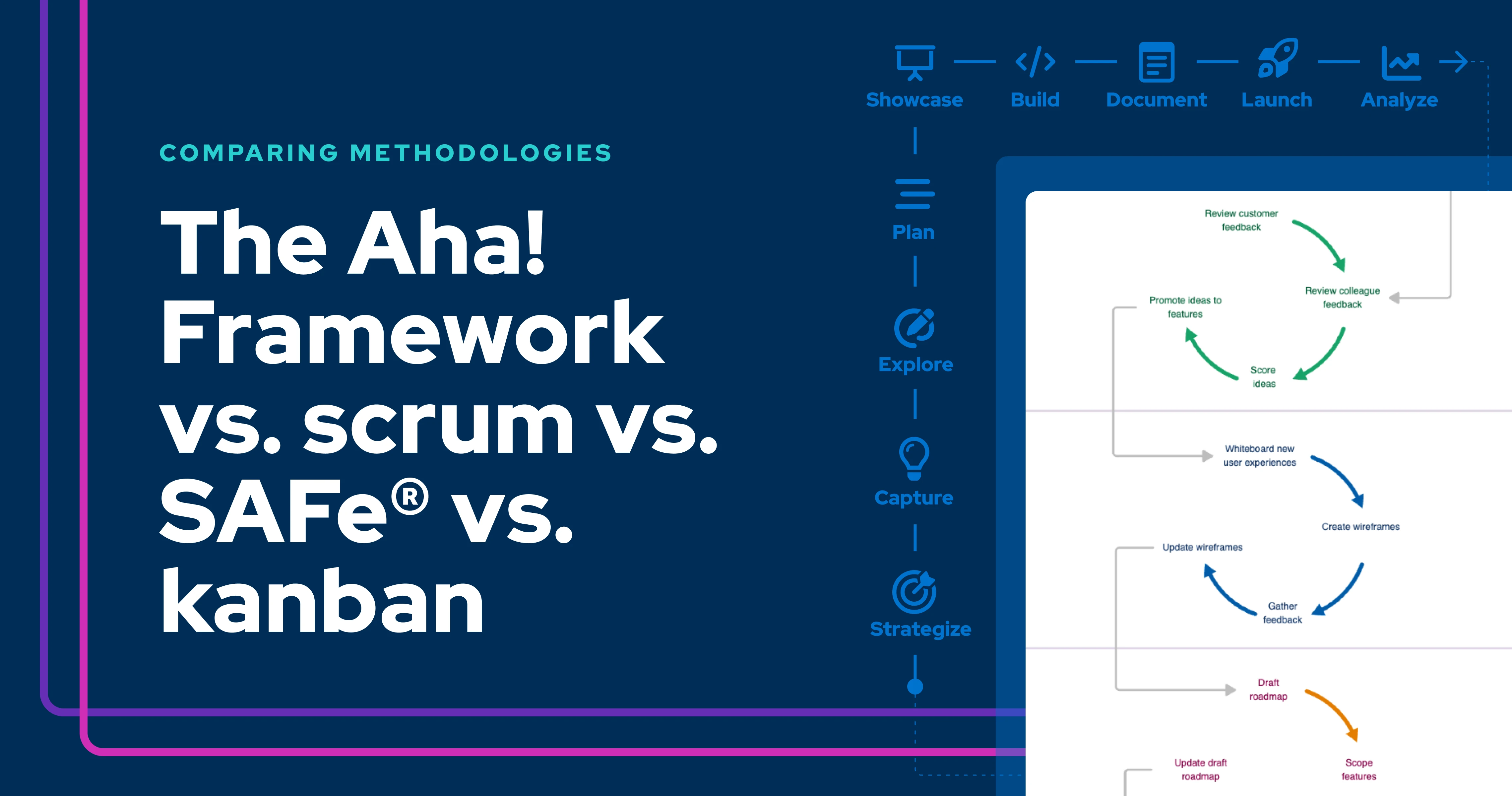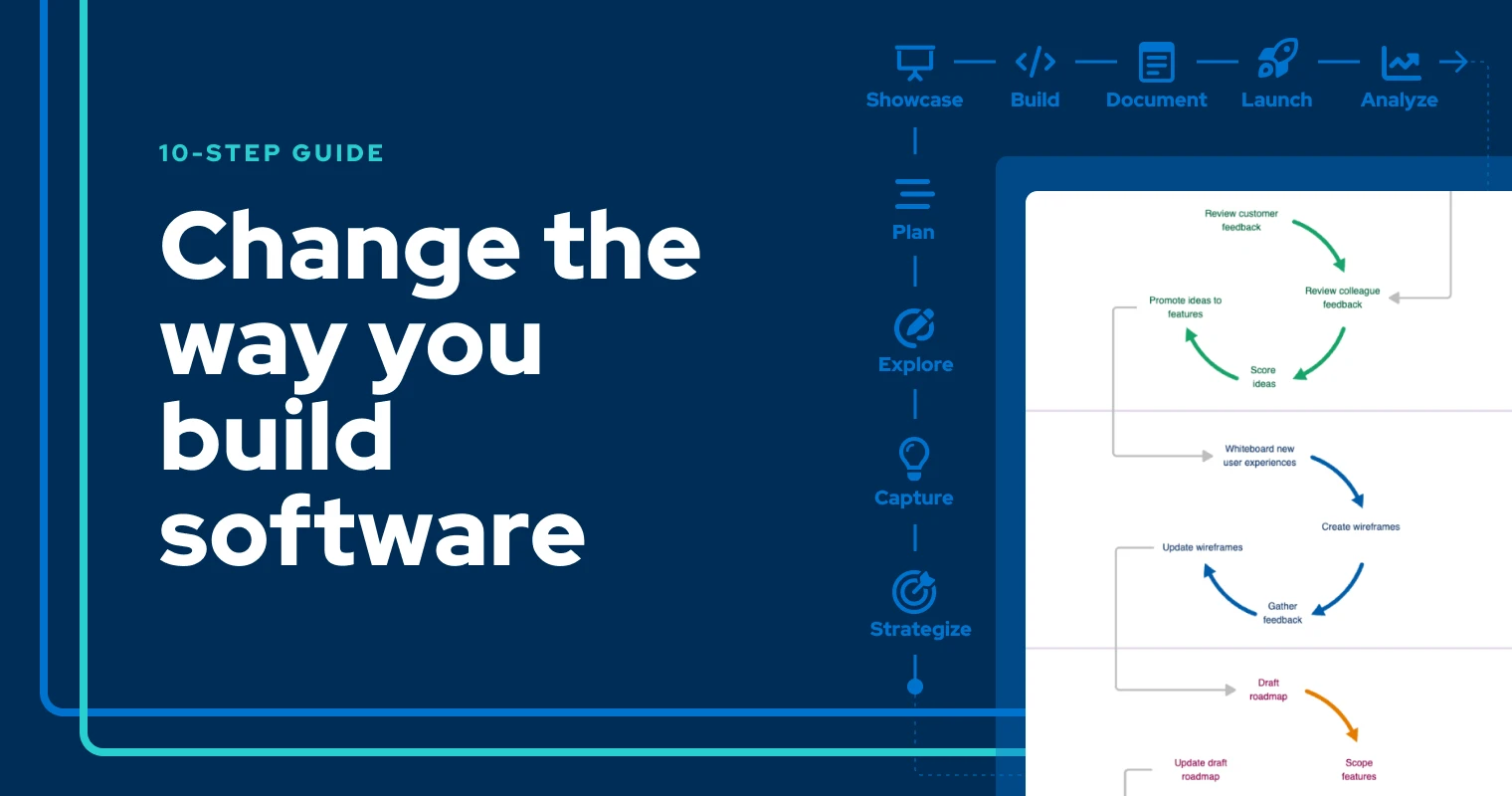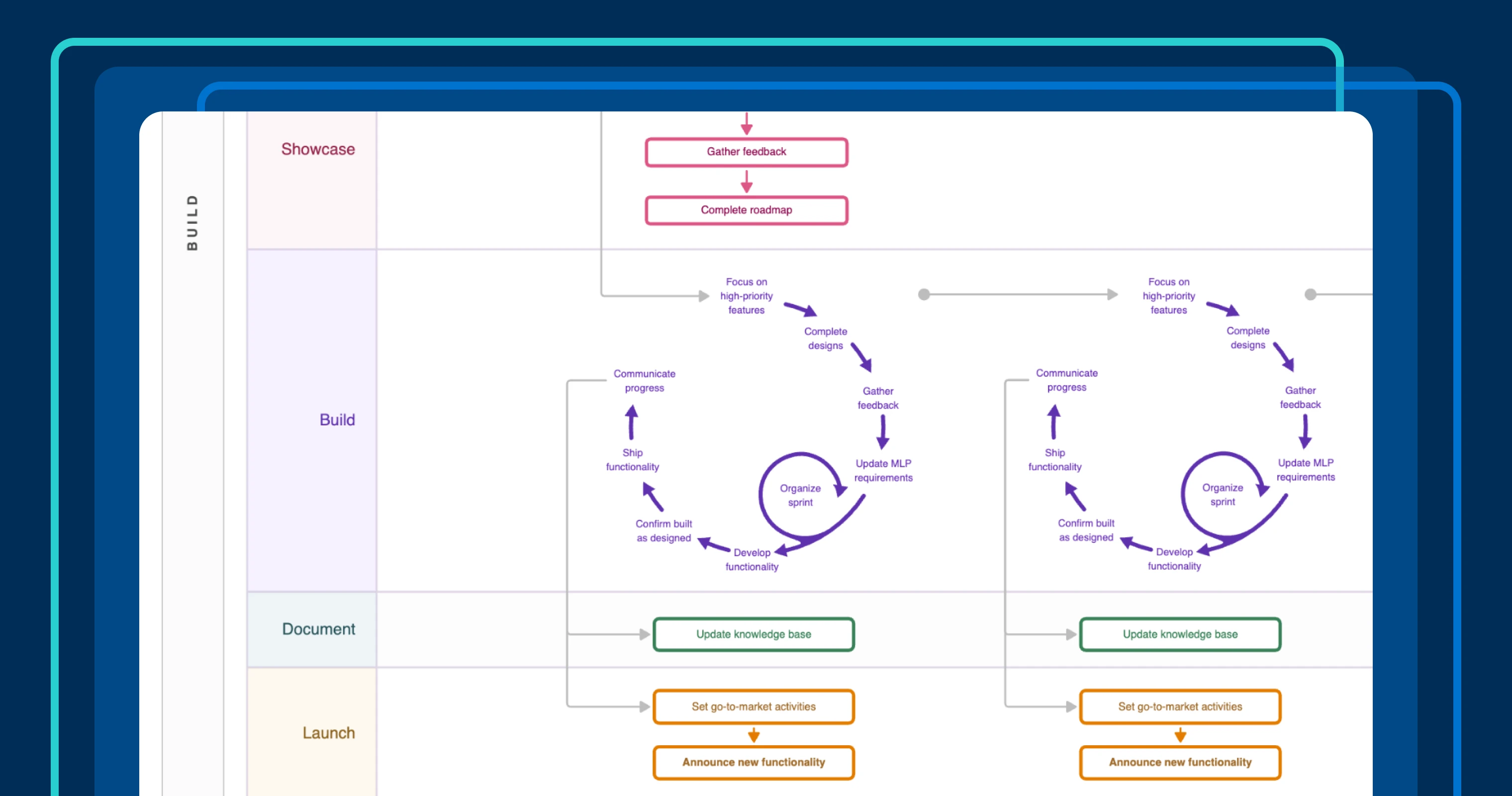
The Aha! Framework vs. scrum vs. SAFe® vs. kanban
Move fast and with purpose. This is what product development teams strive to do. No matter how smart, talented, or experienced the team is, you all need a framework. For any team, this provides an agreed-upon and repeatable process for how you will do the work. Ideally, this frees you to focus on prioritizing the functionality that will help you achieve the product vision together.
The best methodologies are liberating — not constricting. They empower the team with the structure needed to accomplish more, faster.
We talk to customers every day who are increasingly disillusioned with methodologies such as scrum, the Scaled Agile Framework® (SAFe®), and kanban. The problem with these is that they shortchange strategy, bury teams in bureaucracy, or overpromise results. (Often all of the above.)
This is a big reason why we recently shared our own way of working, which we call The Aha! Framework for product development. It is how our team has planned, built, and delivered products over the past decade. The framework is organized around the nine core activities of product development, from setting strategy to analyzing success.
Our framework is unique because it blends strategy, agility, and flexibility. No matter how your team works, you can borrow aspects of it or layer on elements so you can consistently and efficiently deliver more value to customers.
Here is how The Aha! Framework stacks up against three of the most common product development methodologies:
The Aha! Framework vs. scrum
Teams that follow scrum typically engage in short sprints organized around frequent (and sometimes lengthy) ceremonies (e.g., daily standups and sprint retrospectives). The team is typically comprised of a product owner, scrum master, and developers. Although each sprint has a goal, there tends to be very little strategic alignment or roadmap planning incorporated into scrum.
Like scrum, teams following The Aha! Framework work in short sprints and focus on continuous deployment. But The Aha! Framework starts with product goals and initiatives, all while supporting rapid development and the activities needed to bring a product to market. We do not have rigid ceremonies or events, but we do meet as a product team at designated intervals.
Learn more about the activities within The Aha! Framework
The Aha! Framework vs. SAFe®
SAFe is a comprehensive set of guidelines for enterprises to implement agile and lean principles at scale. Prescribed roles at the team, agile release train (ART), solution, and portfolio levels are meant to help organizations manage and deliver a complex portfolio of products. Critics of SAFe cite its high level of complexity, unnecessary administrative overhead, and lack of flexibility.
Like SAFe, The Aha! Framework can help large organizations manage multiple products and coordinate releases. But The Aha! Framework is much simpler and more flexible. There is no jargon to learn and no need to adhere to rigid roles or meeting schedules. And there definitely is no need to sacrifice multiple days of productivity every month for meetings.
Learn how to adopt The Aha! Framework
The Aha! Framework vs. kanban
Kanban is a lightweight workflow management system best suited for small teams or simple projects. A kanban board contains cards that represent units of work. As the team completes work, new cards are pulled from the product backlog and tackled as the team has capacity. Kanban prioritizes efficiency by limiting work in progress and making teams self-directed.
Like kanban, The Aha! Framework is flexible and provides visibility into the team's work and its status. But kanban is more of a workflow system than a comprehensive framework. It does not provide a process for setting strategic goals and initiatives or defining delivery dates for work items.
Here is an overview of the key differences between these product development frameworks:
The Aha! Framework vs. scrum vs. SAFe® vs. kanban | ||||
The Aha! Framework | Scrum | SAFe® | Kanban | |
Strategy |
|
|
|
|
Roles |
|
| Essential ART roles:
Essential team roles:
There are additional roles for large solution and portfolio levels, such as solution architects and enterprise architects. |
|
Delivery cadence |
|
|
|
|
Meetings |
| Essential team level:
Essential program level:
There are additional events at the large solution and portfolio levels, such as solution demos and roadshows. |
| |
Metrics |
|
| Outcomes:
Flow:
|
|
There is not one "correct" way for your product development team to operate. But everyone needs to commit to a standardized, repeatable structure that helps your team do its best.
If you want to learn more about how The Aha! Framework compares to scrum, SAFe, and kanban, dive into our guide on product development methodologies. You can also explore templates for scrum and SAFe in Aha! Roadmaps. Or customize your own framework using our Frameworks functionality.
More resources to help you select the right framework for your team:
Product development software your entire team will love. Try Aha! software for 30 days.




